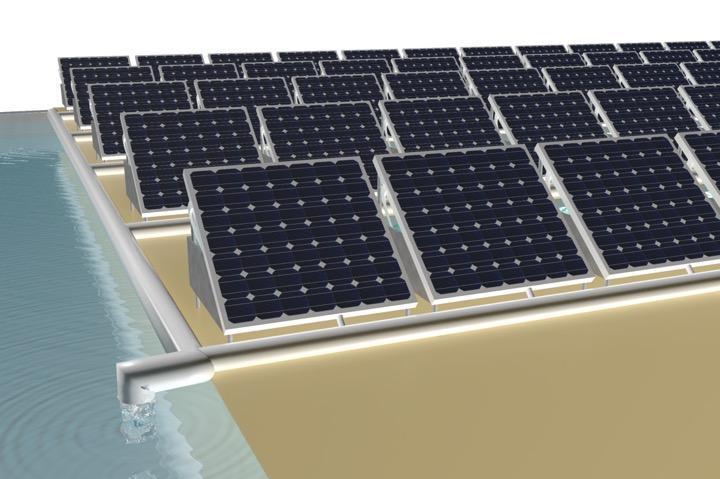July 10 (UPI) — Electricity and clean water are two of the world’s biggest needs — and scientists in Saudi Arabia may have a solution.
According to a new study published in the journal Nature Communications, engineers at King Abdullah University of Science and Technology have developed a solar panel that produces electricity and clean water.
The technology’s creators said water and energy production are interconnected. Solar farms use fresh water to keep their panels dust-free and operating a maximum efficiency. Conversely, desalination plants use a lot of energy to turn seawater into potable water.
“The water-energy nexus is one of the main issues threatening sustainable global development,” Wenbin Wang, a doctoral student in Peng Wang’s labs at KAUST’s Water Desalination and Reuse Center, said in a news release.
The best commercially available photovoltaic solar panels boast a maximum efficiency of 20 percent. The remaining 80 percent escapes, mostly in the form of heat.

Wenbin and his colleagues designed a device to capture the heat released by solar panels and use it to produce fresh water. The device features stacked water channels, each separated by a combination of heat conduction layers and porous hydrophobic membranes.
In the upper channel, captured heat is used to vaporize seawater. When the vapors cross the porous membrane, it is desalinated and the clean water condenses in the channel below. Heat from the condensation is redirected to fuel more water purification.
Tests showed the device is capable of producing 1.64 liters of water per square meter of solar panel surface area, double the output of the best commercial solar stills. The addition of the device did not negatively affect the amount of electricity generated by the solar panels.
Productuon of 1.64 liter of water per square meter,Is it per hour??